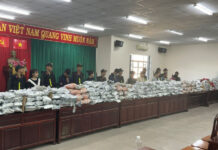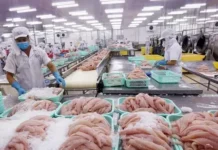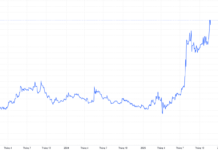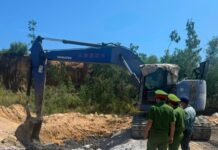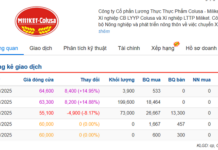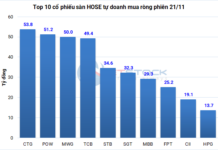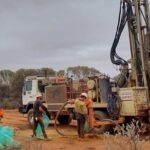Everyone Wants a Piece of the Pie
The global race to exploit the untapped resources of the Arctic appears to be intensifying. As nations strive to break China’s dominance in critical minerals, the world is increasingly turning its gaze toward the melting, sparsely populated northern polar region, seeking to extract raw materials and capitalize on new trade routes.
For instance, former U.S. President Donald Trump repeatedly emphasized the strategic importance of Greenland, a vast Arctic territory, labeling U.S. ownership of the island as “strategically vital” for economic and national security reasons.
Canada has recently ramped up its Arctic investments as part of efforts to harness its resource potential, particularly amid strained diplomatic relations with the United States.
Russia, with its extensive Arctic coastline, has long viewed the region as a strategic priority. This week, President Vladimir Putin hailed the launch of a new nuclear-powered icebreaker, stating, “It is crucial to continuously strengthen Russia’s position” in the Arctic.

“The Arctic is seen as a supplier of numerous raw materials, not just oil and gas, but also strategic metals and rare earth elements,” Marc Lanteigne, Associate Professor at the Arctic University of Norway in Tromso, told CNBC.
What Does the Arctic Hold?
“Currently, Greenland is a treasure trove of base metals, precious metals, gemstones, rare earths, uranium—all readily available. The challenge has been that, until recently, extracting them was deemed entirely impractical,” Lanteigne explained.
“But with climate change and increased navigability across the Arctic Ocean, especially during summer months, Greenland is now being scrutinized as a potential alternative supplier for many of these strategic materials, particularly for China.”
Germanium and gallium are critical components in everything from electric vehicles to semiconductors and military applications.
China, the world’s primary producer of these metals, imposed initial export controls on germanium and gallium in 2023, before formally banning their export to the U.S. late last year in retaliation against Washington’s restrictions on its chip industry. Since then, Beijing has lifted the export ban on gallium to the U.S., though restrictions remain in place.
Greenland has been transformed by the climate crisis. A detailed analysis of historical satellite imagery, published last year by researchers at the University of Leeds, revealed that portions of the ice sheet and glaciers in this Danish autonomous territory have been replaced by wetlands, shrublands, and barren rock.

For mining companies, the loss of ice has inadvertently made some of the island’s strategic minerals more accessible.
Tony Sage, CEO of Critical Metals, which is developing one of the world’s largest rare earth mines in southern Greenland, noted that investor interest in Greenland has surged in recent months, particularly since Trump’s return to power and his renewed focus on controlling the territory.
From Theory to Reality
When asked if the Arctic resource race could be likened to a gold rush, Lanteigne replied, “This is where perception and reality often collide.”
He added, “There’s been significant discussion about rushing to exploit Greenland’s mineral wealth, but I can tell you, having visited multiple times, that if you plan to mine there, you need to bring nearly everything with you.”
Even under ideal conditions, Lanteigne noted that logistical challenges—such as harsh weather and remote terrain—mean it could take 15 to 20 years before companies see substantial profits.
Source: CNBC
Hanoi Intensifies Efforts to ‘Rescue’ Infrastructure, Urgently Constructs 12 Retention Ponds to Combat Flooding
Speaking with Tiền Phong, Deputy Director of Hanoi’s Department of Construction, Nguyễn Thế Công, revealed that the department is urgently advising the city to implement synchronized and critical flood prevention measures. The top priority is to upgrade the drainage infrastructure, construct 12 emergency retention basins, finalize the urban drainage elevation plan, and build forced pumping stations.
Climate Change Threatens to Erase a Decade of Vietnam’s Economic Growth
The World Bank (WB) warns that without adequate adaptation measures, climate change could slash Vietnam’s GDP by at least 12.5% by 2050 compared to baseline projections. This would effectively erase nearly a decade of growth, significantly hindering the nation’s goal of achieving high-income status by 2045.
“Unbelievable Discovery: 64 Shallow Drill Holes Uncover Ultra-High-Grade Rare Earth Deposit, Leaving Mining CEO Stunned: ‘We’ve Never Seen Anything Like This Before’”
This could lay the foundation for the nation to emerge as one of the world’s leading rare earth powerhouses.
Ho Chi Minh City’s Department of Construction Updates on Tidal Surge Developments and Response Measures
Over the past period, as forecasted by the Southern Regional Hydro-Meteorological Center, the combination of the Northeast Monsoon and tidal cycles has caused an unusually high sea level rise. This resonance resulted in a tidal peak of +1.82m, surpassing the Level III alert threshold of +1.6m, leading to flooding in many low-lying areas across Ho Chi Minh City.

